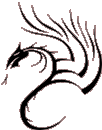POINT: MN-LE-16
| English: | Eyes of the Knee |
| Also Known As: | Knee Eyes |
- On the knee, in the hollow formed when the knee is flexed, immediately below the patella and both medial and lateral to the patellar ligament. (See ST-35 Dubi.)
- A pair of points in the two depressions, medial and lateral to the patellar ligament. Locate with the knee flexed. Medial Xiyan overlaps with ST-35 Dubi.
- With the knee flexed and supported, perpendicular insertion directed toward UB-40 Weizhong 1 to 2 cun.
- With the knee flexed and supported, Oblique insertion in a medial and superior direction behind the patella 1 to 2 cun.
- With the knee flexed and supported, through between lateral and medial M-LE-16 Xiyan, behind the patellar ligament.
- Puncture perpendicularly 0.5 to 1 cun.
- Moxibustion is applicable.
- Straight insertion, pointed medially or laterally, 1.5 to 2 cun. Sensation: local distention, possibly extending downward.
- Slanted insertion, through the patellar tendon joining the first eye to the second, 2 to 2.5 cun. Sensation: local distention and soreness.
- Dispels Wind-Damp
- Benefits the knees
- Reduces swelling
- Alleviates pain
|
|
LIV-7 |
ST-34 |
|
Redness, swelling, and pain of the knees with inability to walk |
Arthritis of the knee |
|
- These are essential points in the treatment of all knee disorders.
- Moxa is particularly helpful on these points.

